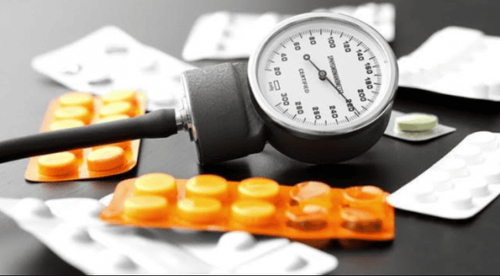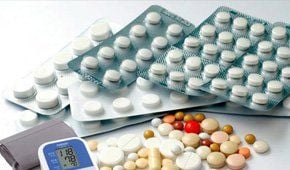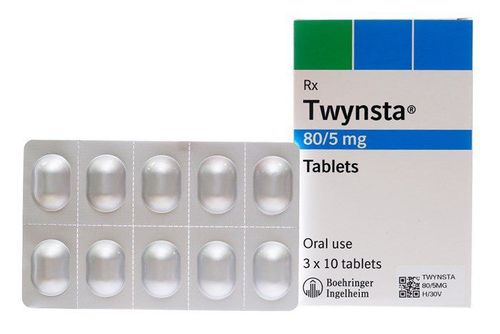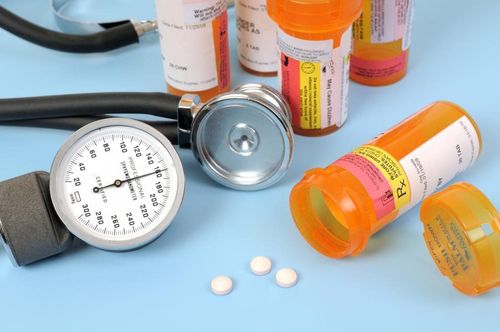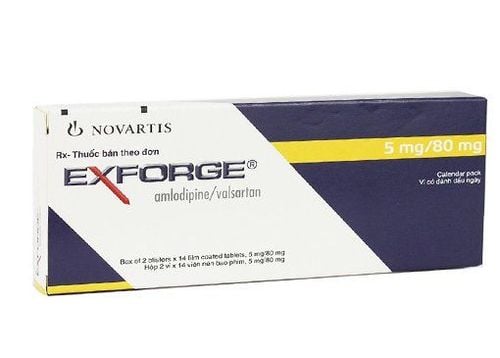This is an automatically translated article.
Blocadip is a drug used in the treatment of high blood pressure. Blocadip can be used alone or in combination with other antihypertensive drugs such as diuretics, beta-blockers to bring the best effect.
1. What is Blocadip?
Blocadip 10 and Blocadip 20 contain the main ingredient is Lercanidipine hydrochloride 10mg or 20mg. Lercanidipine is a calcium channel blocker of the Dihydropyridine family that inhibits calcium influx into smooth muscle and heart muscle. The mechanism of action of this active substance is to relax vascular smooth muscle, thereby reducing the total peripheral resistance.
It is worth noting that the vasodilator effect of Lercanidipine appears gradually, so that usually cases of hypotension with reflex tachycardia rarely occur in hypertensive patients.
2. Indications and contraindications of the drug Blocadip
2.1. Indications of the drug Blocadip Used for patients with essential hypertension, Blocadip can be used alone or in combination with other drugs in the treatment of hypertension.
2.2. Contraindications to the drug Blocadip The drug Blocadip is contraindicated in the following cases:
Patients with hypersensitivity to the components of the drug or drugs of the Dihydropyridine group. People with frequent unstable angina. People who have had a heart attack within 1 month, uncontrolled heart failure, blocked blood flow from the heart. Patients with severe renal impairment (Clcr < 10 ml/min), including those on dialysis. Patients with peritoneal dialysis, severe liver failure, congestive heart failure are not treated. Blockadip is contraindicated in children < 18 years of age.
3. Dosage and how to use Blocadip
Take Blocadip 1 capsule a day at a certain time, preferably in the morning about 15 minutes before eating. Tablets should be swallowed whole with water, never broken or crushed. Take the medicine with filtered water, not with grapefruit juice.
4. Side effects of the drug Blocadip
The use of Blocadip may cause some side effects such as:
Common side effects: Facial flushing, peripheral edema, palpitations, headache, dizziness. Uncommon side effects: Gastrointestinal disturbances, increased urine volume, frequent urination, rash, fatigue, drowsiness, sensation of muscle pain. Rare side effects: Excessively low blood pressure.
5. Drug interactions
Drug interactions may change how Blocadip works or increase the risk of side effects. Therefore, you need to inform your doctor about the list of medications you are taking (including prescription drugs, nonprescription drugs and dietary supplements), especially when you are taking the following drugs:
Anti-seizure drugs Phenytoin or Carbamazepine. Rifampicin tuberculosis drug. Midazolam sleeping pills. Cimetidine for stomach ulcers, indigestion, heartburn. The prominent heart disease drug is Digoxin. Allergy medicine Terfenadine or astemizol. Medicines to treat tachycardia Amiodarone or quinidine. Medicine to treat high blood pressure Metoprolol. The high cholesterol drug Simvastatin.
6. Be careful when using the drug Blocadip
For patients with heart failure, changes in left ventricular function, special monitoring of hemodynamic status when using Blocadip. Use with caution when using Blocadip in patients with pathological sinus syndrome, coronary artery disease. Use caution when administering Blocadip to patients with mild to moderate liver or kidney disease or on dialysis. Pay attention to taking the right dose because the overdose of Blocadip can easily lead to excessive peripheral vasodilatation, which leads to a marked decrease in blood pressure and reflex tachycardia. Some other signs associated with overdose cases are dizziness, headache, and palpitations. At this time, the patient needs to be treated at medical facilities immediately. If you miss a dose, you can take it as soon as you remember. However, do not take Blocadip if it is almost time for your next dose. Do not take a double dose to make up for the missed dose. The basic information about the drug Blocadip in the above article is for reference only. Because this is a prescription drug, patients should not use it on their own, but need to contact a specialist directly to get an appropriate prescription to ensure safety for health.




